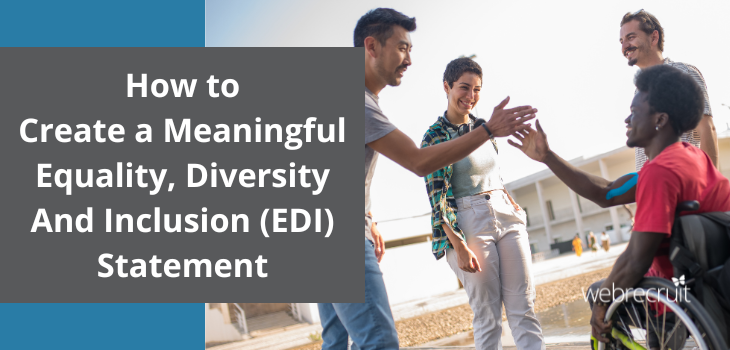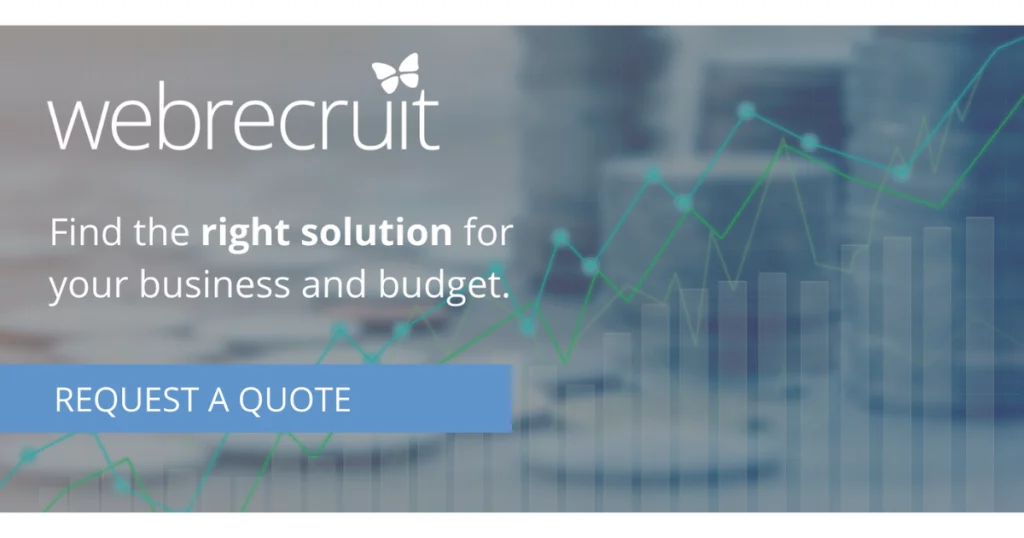A workplace that prioritises Equality, Diversity, and Inclusion (EDI) is crucial for cultivating a thriving and resilient organisation. As job seekers gravitate toward organisations prioritising EDI best practices, knowing how to create a meaningful EDI statement becomes essential to attracting top talent.
What is an EDI Statement?
An EDI statement outlines your organisation’s approach to addressing the challenges faced by underrepresented groups in the workforce.
Whilst EDI statements can differ in length and style, they often act as a roadmap, showing how an organisation plans to cultivate more inclusive practices. Ideally, they should display your approach to recruitment and hiring, employee benefits, workplace culture, stakeholder engagement and organisational strategies.
Why Are EDI Statements Important?
EDI statements significantly impact a candidate’s perception of your organisation’s culture.
They assure candidates that your organisation knows the potential barriers facing employees from differing backgrounds and is taking steps to improve hiring practices to accommodate a diverse range of candidates. As a result, you’ll attract a wider range of high-quality candidates and vastly increase your chances of finding the perfect individual to fill that role.
What’s more, your EDI statement can communicate your wider business strategy, showing that your practices are aligned with EDI. This can enhance your brand reputation, increase social value, and show that you’re taking corporate responsibility seriously.
Recent studies show a strong correlation between financial success and diverse workforces, such as research by McKinsey (2020) which found that ‘diversity can help organisations increase innovation, reconsider entrenched ways of thinking, and improve financial performance’.
To Include, or Not to Include… That is The Question!
There isn’t a checklist or step-by-step guide for writing an EDI statement: however, they should always be authentic, actionable, honest, clear and positive!
You can start by explaining what EDI means to your company and associates, why it matters, and your approach to improving it. A team effort is beneficial when writing your EDI statement, providing a valuable and realistic point of view from current employees, so involve your associates!
Secondly, you can use positive language to create a positive tone. This will reflect your enthusiasm for creating a happy and inclusive workforce. However, be sure to exclude slang, colloquialisms or acronyms as that can be uninclusive, as candidates outside the organisations might struggle to connect with such terms.
Finally, ensure your statement is authentic. Include specific actions you’ll take towards improving EDI. Hold yourself accountable, admit where you need to improve and ensure that your statement is backed up by purpose, time, energy and resources, i.e., your strategies or initiatives, time-specific goals and KPIs.
Stop! In The Name of EDI…
Unsuccessful EDI statements often suffer from the same pitfalls, so here are some things you should avoid when crafting yours.
Avoid treating your EDI statement like an obligatory piece of legal documentation or a marketing ploy. Research conducted by Linkedin (Reilly, 2021) shows that candidates can perceive generic statements as lacking sincerity and doubt their real-life implementation. So, avoid performative statements or talking about how great your EDI practices are without indicating why or committing to improvements.
Lastly, refrain from tokenising the experiences of your employees from underrepresented groups in your organisation. This can look like overestimating how representative they are of your workforce as a whole or aiming to hire a certain percentage of minority candidates without addressing the issues which led to their underrepresentation in the first place.
The Impact of a Diverse And Inclusive Workforce
An authentic EDI statement supported by actionable plans will enable you to reap the benefits of a diverse and inclusive workforce. So, what are these benefits?
A meaningful EDI statement is operationally beneficial. A more diverse workforce means diverse perspectives and skillsets, leading to more creative and innovative approaches to problem-solving. It also means a workforce more representative of our diverse society, resulting in increased cultural awareness, a greater understanding of your customers and, therefore, better business performance!
You’ll retain top-quality talent. Evidence shows that inclusive workplaces which value diversity have more productive and engaged employees, whilst those who report discriminative behaviour face employees with a lower commitment to their work and higher staff turnovers. This is evident in research from the CIPD (2022) and Diversity & Ability (2021), which note the detrimental impact that discrimination in the workplace has on the morale of your employees and the success of your organisation.
Conclusion
Crafting an effective EDI statement can have a significant impact on your company. You can demonstrate your dedication to creating a positive working environment by outlining your commitment to EDI. By involving your colleagues, using positive language, and backing up your statement with actionable plans, you can enhance your brand reputation and increase your social value. Ultimately, a meaningful EDI statement will enable you to reap the benefits of a diverse and inclusive workforce and show that you take your corporate responsibility seriously.
Bibliography
Reilly, Katie (2021) 6 Ways to Successfully Signal Your Company’s DEI Commitment in a Job Posting. Available at: https://www.linkedin.com/business/talent/blog/talent-acquisition/ways-to-signal-company-dei-commitment-in-job-posting
McKinsey & Company (2020) Understanding organizational barriers to a more inclusive workplace. Available at: https://www.mckinsey.com/capabilities/people-and-organizational-performance/our-insights/understanding-organizational-barriers-to-a-more-inclusive-workplace
CIPD (2022) Equality, diversity and inclusion (EDI) in the workplace. Available at: https://www.cipd.org/uk/knowledge/factsheets/diversity-factsheet/#:~:text=Although%20there’s%20no%20legal%20requirement,being%20a%20diverse%20employer%20seriously
Disability Ability (2021) Why diversity and inclusion is vital for your employee retention. Available at: https://diversityandability.com/blog/why-diversity-and-inclusion-is-vital-for-your-employee-retention/






